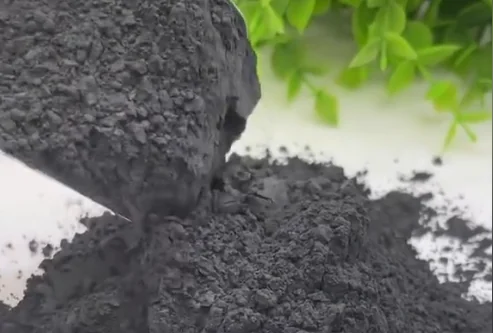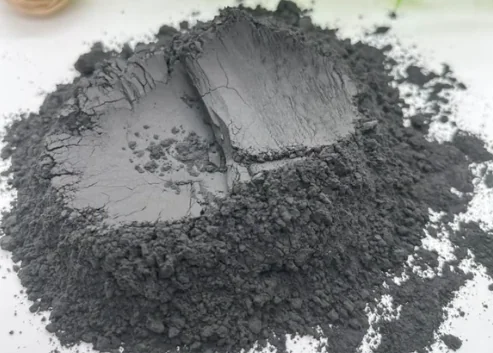In modern wastewater treatment, magnetically enhanced coagulation (MEC) is gaining popularity for its rapid settling, efficient pollutant removal, and strong performance in treating high-load industrial wastewater.
At the heart of this technology lies a key material—magnetic powder. This article breaks down the core properties, critical performance parameters, and application methods of magnetic powder in MEC systems.

What is Magnetic Powder?
Magnetic powder, also called heavy medium powder, is mainly composed of magnetite (Fe₃O₄) and appears as a fine black powder. With large surface area, high reactivity, and strong magnetic properties, it can quickly adsorb pollutants from water—especially in high-COD and high-colority wastewater.
🔹 Key Features:
✅ Rapid flocculation & sedimentation Magnetic powder combines with coagulants and flocculants to form magnetic microflocs, which settle rapidly under an external magnetic field.
✅ Efficient pollutant removal Magnetic powder enhances removal of COD, suspended solids (SS), heavy metals, and color.
✅ Recyclable and reusable Magnetic powder can be recovered from sludge using magnetic separators and reused in the process, reducing chemical costs.
Key Parameters of Magnetic Powder
The performance of magnetic powder has a direct impact on the MEC system’s efficiency. When selecting magnetic powder, consider the following indicators:
📌 Key Specifications:
- Particle Size: Common range is 150–300 mesh (approx. 50–100 μm). Affects dispersion, floc formation, and recovery.
- Total Iron Content: Should be ≥68%. Higher iron content = stronger magnetic properties and adsorption.
- Magnetic Content: Should be ≥98%. Determines how well the powder responds to magnets and how easily it can be recovered.
- Density: Typically 4.8–4.9 g/cm³. Higher density = faster settling.
Choosing the right powder based on these factors ensures stable and efficient performance in MEC systems.
How Magnetic Powder is Used in MEC Systems
Magnetically enhanced coagulation improves traditional coagulation by using magnetic powder to form magnetic flocs, which settle faster and more efficiently when exposed to a magnetic field.
🔧 Typical MEC Process Flow:
- Influent wastewater enters the MEC unit (after pretreatment or equalization).
- PAC (coagulant) is added to initiate floc formation.
- Magnetic powder is dosed to generate magnetic microflocs.
- PAM (flocculant) is added to enlarge and stabilize flocs.
- Magnetic field applied to enhance rapid solid-liquid separation.
- Sludge and magnetic powder are separated:
- Sludge goes to dewatering.
- Magnetic powder is recovered via magnetic separators and reused.
✅ Advantages of MEC Technology:
- Fast settling: Cuts settling time by over 80% compared to conventional methods.
- High pollutant removal: Removes 90%+ of COD, SS, color, and heavy metals.
- Recyclable magnetic powder: Saves on chemical costs, improves system economy.
- Ideal for high-load wastewater: Effective for municipal sewage, textile, ink, and coal washing wastewater.

Conclusion
Magnetic powder plays a vital role in the success of MEC systems, greatly enhancing treatment speed, removal efficiency, and reusability.
To maximize performance:
- Choose magnetic powder with optimal particle size, iron content, magnetic content, and density.
- Use magnetic separation to recover and reuse powder, cutting operational costs.
This makes MEC a cost-effective, scalable, and high-efficiency solution for complex wastewater challenges across multiple industries.
